Lesson 9
Solve Story Problems
Warm-up: How Many Do You See: Finger Addition (10 minutes)
Narrative
The purpose of this How Many Do You See is to allow students to use subitizing or grouping strategies to describe the images they see.
Launch
- Groups of 2
- “How many do you see? How do you see them?”
- Flash image.
- 30 seconds: quiet think time
Activity
- Display image.
- “Discuss your thinking with your partner.”
- 1 minute: partner discussion
- Record responses.
- Repeat for each image.
Student Facing
How many fingers do you see?
How do you see them?
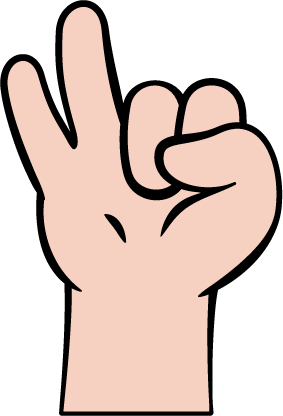


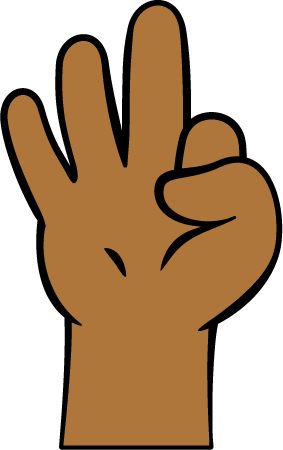


Student Response
For access, consult one of our IM Certified Partners.
Activity Synthesis
- Display the image with four fingers held up.
- “How many fingers are on each hand?” (2 fingers)
- “How many fingers are there together?” (4 fingers)
- “2 and 2 is 4. We can also write that as \(2 + 2\).”
Activity 1: Markers at School (10 minutes)
Narrative
Required Materials
Materials to Gather
Launch
- Groups of 2
- Give students access to two-color counters, connecting cubes, and markers.
- Read and display the task statement.
- “Tell your partner what happened in the story.”
- 30 seconds: quiet think time
- 1 minute: partner discussion
- Monitor for students who accurately retell the story. Choose at least one student to share with the class.
- Reread the task statement.
- “Show your thinking using drawings, numbers, words, or objects.”
Activity
- 2 minutes: quiet work time
- 2 minutes: partner discussion
- Monitor for a student who uses markers to solve the problem. Monitor for a student who uses counters or connecting cubes to solve the problem.
Student Facing
There were 4 markers at school.
Elena brought 3 more markers to school.
How many markers are at school now?

Student Response
For access, consult one of our IM Certified Partners.
Advancing Student Thinking
If students take out more or fewer than 7 markers or counters, consider asking:
- “Can you use your markers/counters to tell me what happened in the story?”
- “There were 4 markers at school. Which markers/counters show the 4 markers that were at school? Which markers/counters show the 3 more markers that Elena brought to school?”
Activity Synthesis
- Invite a student who used markers to share.
- “How do the markers show what happened in the story?”
- Invite a student who used counters or connecting cubes to share.
- “How do the counters show what happened in the story?” (Those counters show the markers that were at school. Those counters show the markers that Elena brought to school.)
- “There were 4 markers and Elena brought 3 more markers. 4 markers and 3 markers is 7 markers. We can write that as ‘4 and 3’ or ‘\(4 + 3\)’.”
Activity 2: Balls at Recess (10 minutes)
Narrative
The purpose of this activity is for students to interpret how a drawing represents a story problem (MP2). Students solve a Take From, Result Unknown story problem. Because balls are the objects in the story problem, it may be easier to relate the circles in a picture to the balls in the story. Students are introduced to the number 0 in the activity synthesis.
Advances: Listening, Representing
Supports accessibility for: Conceptual Processing
Required Materials
Materials to Gather
Launch
- Groups of 2
- Give students access to two-color counters or connecting cubes.
- Read and display the task statement.
- “Tell your partner what happened in the story.”
- 30 seconds: quiet think time
- 1 minute: partner discussion
- Monitor for students who accurately retell the story. Choose at least one student to share with the class.
- Reread the task statement.
- “Show your thinking using drawings, numbers, words, or objects.”
Activity
- 2 minutes: quiet work time
- 2 minutes: partner discussion
Student Facing

There were 5 balls on the playground.
Diego brought 5 of the balls inside.
How many balls are on the playground now?

Student Response
For access, consult one of our IM Certified Partners.
Activity Synthesis
- Draw 5 circles in a line with 5 of them crossed out, as pictured:
- “Lin drew this picture. How does this picture show what happened in the story?”
- If needed, ask “Where do you see 5 balls that are on the playground in the picture?” and “Why are 5 of the circles crossed out?”
- “How many balls are on the playground now?” (None, zero.)
- “There are no balls left on the playground. There are 0.”
- Demonstrate writing the number 0.
- “There were 5 balls on the playground and Diego brought 5 of the balls inside. We can write that as ‘5 take away 5’ or ‘\(5 - 5\)’. 5 take away 5 is 0.”
Activity 3: Introduce Math Fingers, Add 2 Hands (25 minutes)
Narrative
The purpose of this activity is for students to learn stage 3 of the Math Fingers center. Students each hold up some fingers on one hand and work with their partner to figure out how many fingers they are holding up together. Students color the fingers on the recording sheet and write a number to show how many fingers there are altogether. The recording sheet can be laminated or in a sheet protector so it can be used multiple times by students.
After they participate in the center, students choose from any stage of previously introduced centers.
- Math Stories
- Subtraction Towers
- 5-frames
- Build Shapes
- Counting Collections
Required Materials
Materials to Gather
Materials to Copy
- Math Fingers Stage 3 Recording Sheet
Required Preparation
- Gather materials from:
- Math Stories, Stages 1 and 2
- Subtraction Towers, Stage 1
- 5-frames, Stages 1 and 2
- Build Shapes, Stages 1 and 2
- Counting Collections, Stage 1
Launch
- Groups of 2
- Give each student a recording sheet.
- “We are going to learn a new way to do the Math Fingers center. It is called Math Fingers, Add 2 Hands.”
- “My partner and I will each hold up some fingers on 1 hand.”
- Hold up 3 fingers on 1 hand. Choose a student to hold up 2 fingers on 1 hand.
- “Now we have to figure out how many fingers we are holding up altogether. How can we figure it out?” (You can count the fingers. You can put your fingers together. You can look and see that it’s 3 and 2, which is 5.)
- Display math fingers recording sheet.
- “Now we each need to fill out our recording sheet. First we color the fingers to show which fingers we were holding up. Then we write a number to show how many fingers we held up on each hand.”
- “What number do you think we write at the bottom of the page?” (How many fingers you held up altogether.)
- “It’s your turn to play with your partner. Put 1 hand behind your back. Count to 3. When it gets to 3, hold up some of your fingers on 1 hand.”
Activity
- 8 minutes: partner work time
- “Now you can choose another center. You can also continue playing Math Fingers.”
- Display the center choices in the student book.
- Invite students to work at the center of their choice.
- 10 minutes: center work time
- If time, invite students to choose another center.
Student Facing
Choose a center.
Math Fingers
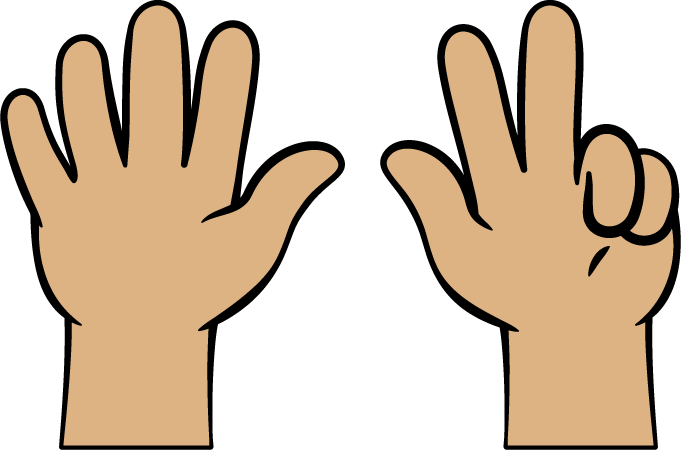
Math Stories

Subtraction Towers

5-frames

Build Shapes
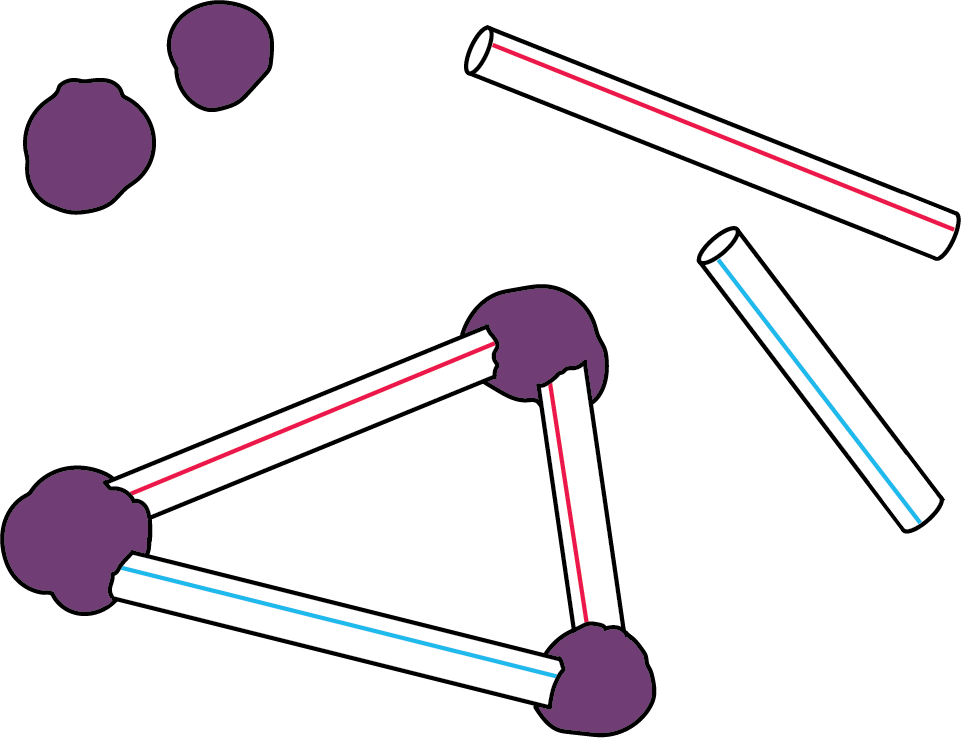
Counting Collections
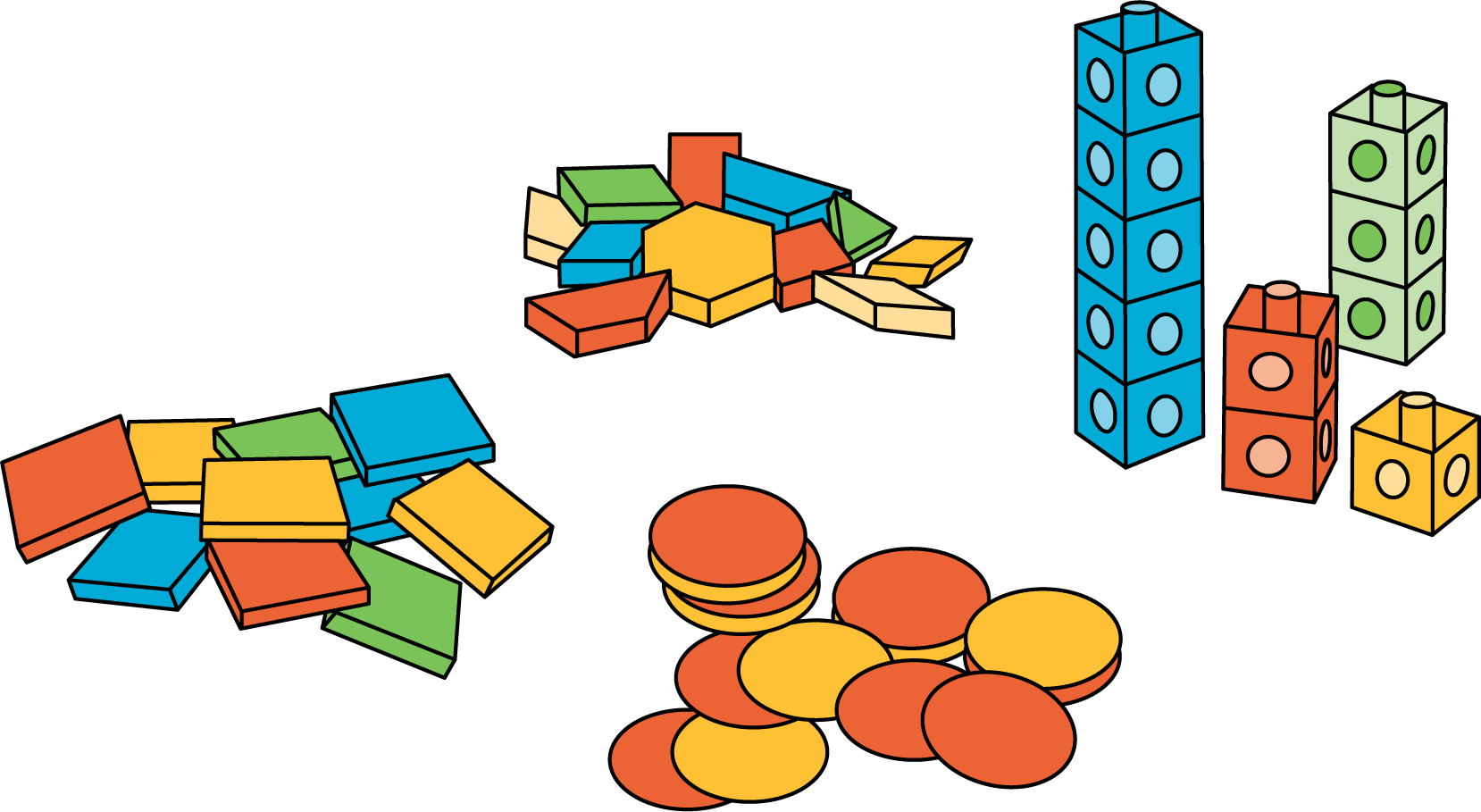
Activity Synthesis
- “Was there a time when you didn’t need to count the fingers to figure out how many fingers you and your partner held up together? How did you know how many fingers there were?” (I could just see that I had 2 fingers and my partner had 2 fingers. I know that 2 and 2 is 4. I only had 1 finger up and my partner had 3 fingers up. I know that 3 and 1 more is 4.)
Lesson Synthesis
Lesson Synthesis
Reread the story problem from the second activity.
“Tyler used counters to show what happened in the story.”
Display 5 counters and demonstrate moving 5 to the side.
“Jada drew a picture to show what happened in the story.”
Draw and display 5 circles in a line with 5 crossed out.

Cool-down: Unit 4, Section B Checkpoint (0 minutes)
Cool-Down
For access, consult one of our IM Certified Partners.
